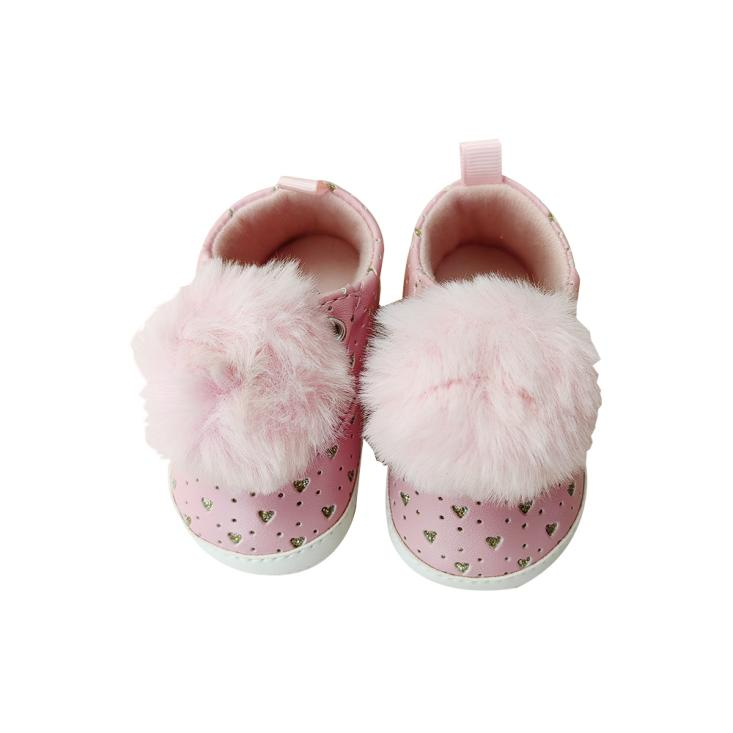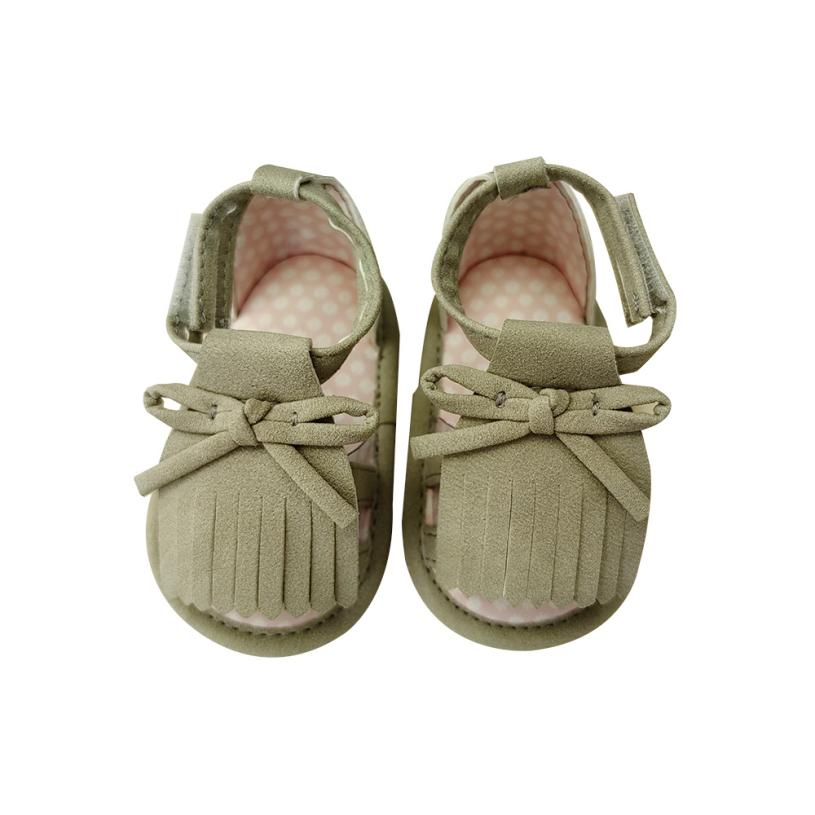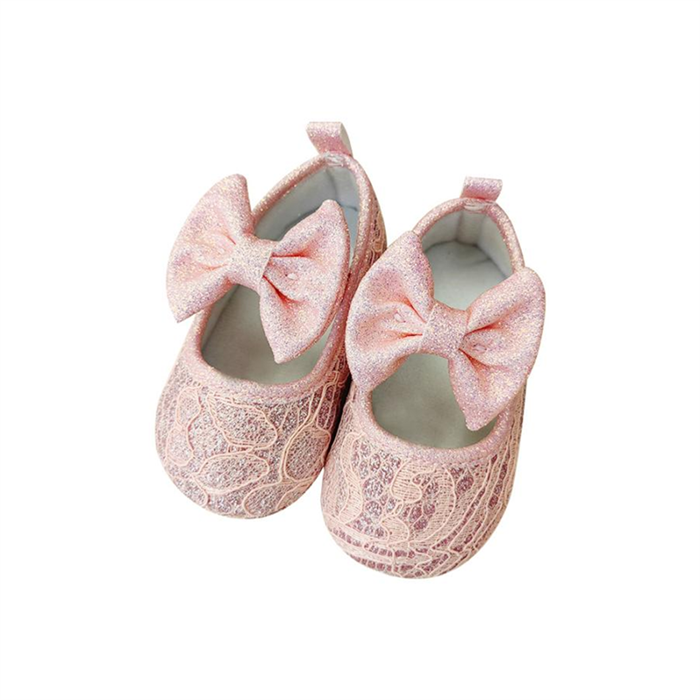Witnessing our baby's first steps is such an unforgettable and exciting experience. It marks the beginning of a new stage in their developmental milestones.
As parents, it's the most common thing in the world that you would want to immediately buy them their first pair of adorable shoes. However, there are different infant shoes on the market these days, including slippers,sandals,sneakers, boots and booties. When weighing your options, it can be overwhelming to decide which ones are right for your little one.
Not to worry! In this guide, we will take some of the stress of parenthood, and we'll walk you through everything you need to know about choosing the perfect pair of baby shoes for your little one.
So whether you're a first-time mom or an experienced parent looking for some helpful advice, read on for the ultimate guide to choosing baby shoes.
When should my baby start wearing shoes?
After your baby takes its first steps, you may think you want to buy a pair of baby shoes straight away. Keep in mind at this point, you do not want to interfere with the natural movements of crawling or walking.
According to the American Academy of Pediatrics (AAP), children learn to walk by gripping the ground with their toes and using their heels for stability. So when at home, it is advised to leave your child barefoot as much as possible to promote natural foot development. When you help your baby get their footing (literally), it allows the small muscles in their feet to develop and strengthen.
Your baby will also tend to wobble a lot when learning how to walk. Wearing cumbersome shoes will create an unnecessary barrier between their feet and the ground. It will also be more difficult for them to grip and master how to balance themselves.
Once your baby is taking steps independently indoors and outdoors may you consider buying them their first pair of standard shoes. For little feet, find the most flexible, and natural solutions.
What to look for in baby shoes?
When it comes to baby shoes, there are a few key things you need to look for:
• Comfort: Baby shoes should be comfortable. They should fit snugly but not too tightly, and they should be made from soft materials that won't irritate your baby's delicate skin.
• Protection: The primary purpose of baby shoes is to protect your child's feet from falls and injuries. Look for a supportive shoe that will cushion your child's steps as they learn how to walk.
• Materials: Make sure that baby shoes are made from durable materials. They should be able to withstand lots of wear and tear, and they should be easy to clean so that you can keep them looking new for as long as possible.
• Fit: Baby shoes must fit correctly; otherwise, they can cause the baby to trip and fall. They should be snug but not too tight. Shoes that are too big can also be a safety hazard.
• Easy to put on: The shoes must be easy to put on and take off, especially when your child is just starting to learn how to walk. Avoid shoes with laces or straps, as they can be challenging to manage.
• Support: The baby's shoes need to provide good support for the baby's feet. This is especially important in the early months when the baby's bones are still soft and malleable. Look for shoes with flexibility and support.
• Style: Baby shoes come in various types, so you can find the perfect pair to match your baby's outfit. There is also a range of colors and designs to choose from, so you can find shoes that you will love.
• Type: There are three types of baby shoes: soft sole, hard sole, and pre-walkers. Soft sole baby shoes are best for newborns and infants because they allow their feet to flex and move. Hard sole baby shoes are for babies starting to walk, as they provide more support. Pre-walkers are soft sole baby shoes with a rubber grip on the bottom to help keep the baby steady as they learn to walk.
• Size: Most baby shoes come in 0-6 months, 6-12 months, and 12-18 months. It's important to choose baby shoes that are the right size. You'll want to select a size that's slightly bigger than your baby's current shoe size so that they'll have plenty of room to grow.
Shoe Recommendations from the American Academy of Pediatrics
The AAP recommends the following when considering shoe recommendations for children:
- Shoes should be lightweight and flexible to support natural foot movement with a stable base of support.
- Shoes should be made of leather or mesh to allow your baby’s feet to breathe comfortably.
- Shoes should have rubber soles for traction to prevent slipping or sliding.
- Stiff and compressive footwear may cause deformities, weakness, and loss of mobility.
- Base your shoe selection for children on the barefoot model.
- Shoes should have good shock absorption with durable soles as children participate in more high-impact activities.
What types of shoes are best for babies?
There is no one "best" type of baby shoe. It all depends on what the baby needs and what you are looking for. Some popular baby shoe styles include:
- Newborn knitted booties:Booties are a type of slipper that covers the baby's entire foot. They are perfect for keeping the baby's feet warm and protected..
- Infant sandal newborn:Sandals are shoes with an open back and perfect for summer weather. They allow the baby's feet to breathe and are ideal for wearing when it's hot outside.
- Infant metallic PU mary Janes: Mary Janes are a style of shoe that has a strap across the top of the foot. They are often decorated with bows or other embellishments.
- Infant canvas sneakers: Sneakers are a versatile style of shoe that can be worn for both dressy and casual occasions. They are perfect for active babies who need a good amount of support.
- Infant shoes soft bottom:Soft soles are ideal for babies because they provide a comfortable fit and flexibility. This type of shoe allows your baby to feel the ground underneath their feet, which helps with balance and coordination.
How to measure my baby's shoe size?
When measuring your baby's shoe size, you will want to use a soft cloth tape measure. Wrap the tape measure around the widest part of their foot (usually just behind the toes) and make sure it's not too tight or too loose. Write down the measurement and compare it to the chart below to find your child's shoe size.
- If your baby's measurement is between two sizes, we recommend going with the larger size.
- The shoes should be a bit snug when you first put them on, but they will stretch out as your child wears them.
- At least once a month, check the fit of your toddler's shoes; the top of the child's big toe should be about a finger's width away from the inside edge of the shoe. Remember that having no shoes at all is preferable to having shoes that are too tight.
Make sure they fit correctly with a simple test: put on both shoes and have your child stand up. The shoes should be tight enough to remain without coming off, yet not too tight; if they're too loose, the shoes will come off while your little one is walking.
Conclusion
It’s such an exciting moment to watch our babies grow and reach their milestones. Buying your little one’s first pair of shoes is a big moment, and we want to make sure that you have all the information you need to choose the perfect shoes.



Post time: Sep-06-2023